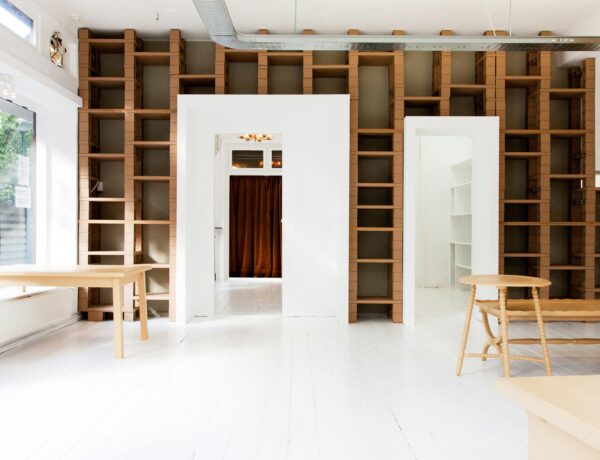Small rooms often present design challenges, especially when it comes to making them feel more spacious. Flooring can be one of the most effective tools in transforming cramped spaces into airy, open areas. With a few simple tricks, you can use colour, direction, and texture to give the illusion of more space, creating a sense of flow and cohesiveness. Here are some tips on how to make the most out of your flooring to make even the tiniest spaces feel bigger.
Choose Lighter Shades for a More Open Feel
Light tones have the power to reflect more light, which can open up a room and make it appear larger. Neutral hues like whites, soft greys, or light beige are excellent choices as they help create a sense of airiness. Lighter floors act as a blank canvas, giving a room a more expansive and welcoming atmosphere.
When selecting flooring, consider materials like light wood or pale stone tiles. Allfloors offers a range of stylish options that suit various design tastes, all while ensuring your space feels brighter and more open.
Lay Flooring Diagonally to Create the Illusion of Space
One of the most effective tricks for visually expanding a room is the direction of your flooring. Rather than installing tiles or planks parallel to the walls, try laying them diagonally. This technique creates more dynamic lines and breaks up the room’s symmetry, which tricks the eye into perceiving more space. The diagonal pattern draws attention outward, making the room appear more expansive than it truly is.
Opt for Seamless Flooring to Enhance Flow
Seamless flooring choices, such as large-format tiles or wide planks, eliminate visible breaks and joints that often divide a space. The fewer interruptions in the flooring, the more continuous the space will appear. With fewer transitions, a room feels more cohesive and open, avoiding the visual clutter that smaller, more segmented tiles or different flooring materials might create.
Wide planks of wood or large tiles of natural stone are ideal for this technique. They add to the impression of a bigger, uninterrupted space, helping rooms feel more expansive.
Use Glossy Finishes to Reflect Light
A glossy or high-shine floor finish can dramatically enhance the sense of space. Glossy surfaces reflect both natural and artificial light, brightening a room and giving it an airy feel. In contrast, matte finishes tend to absorb light, making a space appear smaller and more enclosed. When choosing between floor finishes, consider how light plays a role in your room’s atmosphere.
Tiles with a polished ceramic finish or high-gloss hardwoods can achieve this effect without being overly slippery, allowing for both style and practicality.
Select Large-Scale Flooring Patterns
The scale of your flooring’s pattern can also affect the perception of space. While smaller patterns or intricate details can work well in larger areas, they may overwhelm a small room, making it feel more cramped. Instead, go for larger, more open patterns that don’t overwhelm the room. For example, large-scale geometric patterns or wide planks of wood help keep the floor design simple and spacious.
This approach allows the eye to travel easily across the floor, avoiding distractions that would otherwise make the space feel fragmented.
Stick to One Flooring Material Throughout
When trying to create a sense of openness in a small space, consistency is key. Using one type of flooring throughout the entire room or even the whole home helps to create a seamless look. The lack of visual interruption makes the space feel larger and more connected. Whether it’s hardwood, laminate, or tile, maintaining a uniform flooring style ties the design together and expands the visual boundaries of your space.
Go for a Minimalist Texture
When it comes to texture, less is often more in smaller rooms. Heavy textures or overly detailed flooring can make a room feel cluttered, which detracts from the sense of spaciousness you want to create. Instead, opt for subtle textures like brushed wood or smooth stone. These textures don’t compete for attention and allow the room to maintain a sense of lightness and simplicity.
Consider Underfloor Heating for an Uncluttered Look
Underfloor heating can also contribute to a spacious feeling. Not only does it remove the need for bulky radiators or other furniture, but it also allows you to choose more streamlined, modern flooring options without worrying about heat efficiency. A clear, unobstructed floor makes the room appear more expansive and neat.
Add a Border for Definition
For rooms that are slightly larger but still need help defining their space, consider a border design. By adding a border of contrasting material or colour around the edges of the room, you can visually separate areas without making the space feel closed off. A subtle border highlights the room’s shape, making it feel more structured yet still spacious.
By incorporating these flooring techniques into your space, you can maximize the visual impact and create a room that feels both functional and open. Small changes in your flooring can go a long way in transforming the atmosphere, offering a simple solution for enlarging your living area without expensive renovations.
Read more home improvement articles at ClichéMag.com
Images provided by Deposit Photos, BingAI, Adobe Stock, Unsplash, Pexels, Pixabay & Creative Commons




